Ultimate Guide to Wildlife Cameras:
Ever felt like choosing a camera for wildlife photography is akin to navigating a dense, uncharted wilderness? You’re not alone. The vast array of options, each boasting a unique set of features and specs, can be overwhelming. Whether you’re a seasoned photographer with brand loyalty or a budding enthusiast seeking your first camera, this ultimate guide to wildlife cameras is here to help.
We understand the confusion. This guide cuts through the technical jargon and equips you with the knowledge required to make an informed decision. Drawing from our experience using various wildlife photography cameras, we’ll provide insights to steer you in the right direction.
Unveiling Your Options:
This is just the first glimpse into the exciting world of wildlife photography gear explored in our ultimate-guide-to-wildlife-cameras. We’ve explored the strengths of both DSLR and mirrorless cameras, but there’s much more to discover.
In upcoming adventures, we’ll delve deeper into the specifics of our top camera picks, unveiling the unique features and benefits that make each one a champion in the wild. We’ll also be taking a deep dive into the world of essential wildlife photography equipment, including powerful lenses, sturdy tripods, and other must-have tools and gear.
Stay tuned for intensive reviews and comprehensive explorations of wildlife photography gear. We’ll equip you with the knowledge to elevate your game and elevate your gear!
Table of Contents:
Introduction
- The Enchantment of Capturing America’s Wildlife
- Unveiling the Camera Landscape
Camera Types
- Mirrorless vs. DSLR Cameras
- Full-Frame vs. APS-C Sensor Cameras
- Medium Format for Wildlife Photography: A Promising Niche
Top Camera Brands for Wildlife Photography
Choosing the Right Camera for Wildlife: Essential Features
- Sensor Size and Resolution
- Megapixels Explained
- Autofocus: Capturing the Decisive Moment
- Burst Mode: Freezing Fleeting Actions
- Weather Sealing: Embracing the Elements
- Image Stabilization: Combating Camera Shake
Additional Considerations
- Lenses: The Window to Wildlife
- Tripods: Ensuring Rock-Solid Stability
- Memory Cards: Storing Your Precious Captures
- Conclusion
- FAQs
Introduction:
The thrill of witnessing wildlife in its natural environment is unparalleled. But these moments are often fleeting, disappearing as quickly as they appear. Photography offers a powerful tool to preserve these encounters, transforming them into stunning visuals that spark wonder and inspire conservation efforts.
The Enchantment of Capturing America’s Wildlife: An Introduction in the Ultimate Guide to Wildlife Cameras:
Imagine the heart-stopping thunder of a grizzly bear’s charge, the silent stalk of a majestic bull elk through the undergrowth, its rack of antlers parting the branches like a king surveying his domain, or the vibrant flash of a blue jay against a snowy landscape.
Wildlife photography in the USA allows you to witness these awe-inspiring moments firsthand, documenting the remarkable creatures that grace our diverse ecosystems. It’s a chance to not only capture stunning visuals but also gain a deeper understanding of their behavior and the crucial role they play in maintaining the delicate balance of our natural world.
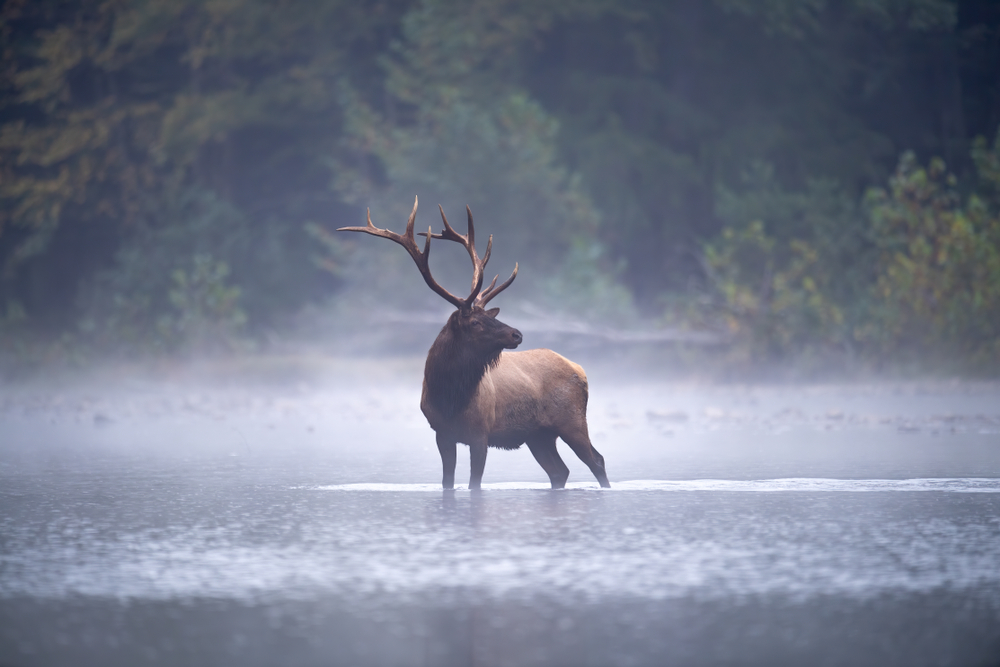
Unveiling the Camera Landscape:
The technological advancements in the camera industry have been nothing short of revolutionary. Today, photographers have a wider array of choices than ever before. But with so many features and technical jargon thrown around, selecting the ideal camera can be a daunting task.
This ultimate guide to wildlife cameras aims to demystify the complexities and empower you to make an informed decision.
Camera Types:
When it comes to wildlife photography, the landscape of camera systems is more diverse than just mirrorless and full-frame. In this overview, we will delve into crop-sensor cameras, mirrorless cameras (MILCs), DSLR cameras, and medium format cameras.
Mirrorless Cameras (MILCs): These compact powerhouses boast electronic viewfinders (EVFs) that offer a real-time preview of the image being captured. Generally lighter and more portable than their DSLR counterparts, mirrorless cameras are ideal for photographers who value mobility and discretion. A significant portion of mirrorless cameras use APS-C sized sensors (often referred to as “crop sensors”). While some high-end mirrorless cameras offer full-frame sensors, crop sensors remain prevalent due to their affordability and the advantages they offer for specific situations like wildlife photography.
DSLR Cameras: Digital single-lens reflex cameras have been the mainstay of professional photographers for decades. They utilize an optical viewfinder (OVF) that provides a direct view of the scene through the lens. DSLRs also encompass a range of crop sensor and full-frame sensor options.
Crop Sensor Cameras: Crop sensor cameras, featuring APS-C sized sensors, are present in both mirrorless and DSLR systems. While full-frame sensors offer superior low-light performance, crop sensors hold some advantages for wildlife photography:
Increased Effective Focal Length: Due to the smaller sensor size, crop cameras apply a crop factor to the focal length of the lens. This effectively magnifies the image, providing a closer framing of distant subjects without requiring an actual longer focal length lens. This proves beneficial in wildlife photography where getting close to animals can be challenging.
Affordability: Crop sensor cameras and lenses are generally more affordable compared to their full-frame counterparts. This can be an attractive option for beginners or photographers on a budget.
Medium Format Cameras: For photographers seeking the absolute pinnacle of image quality, medium format cameras enter the scene. These behemoths boast significantly larger sensors compared to full-frame cameras, resulting in unparalleled detail, dynamic range, and low-light performance. While their exceptional image quality is undeniable, medium format cameras come with several drawbacks:
Size and Weight: Medium format cameras and lenses are substantially larger and heavier than their full-frame or crop sensor counterparts. This can be a significant hurdle for photographers who value portability and maneuverability.
Cost: Medium format cameras represent a significant investment. The camera bodies and lenses tend to be much more expensive than full-frame options.
Autofocus and Speed: While advancements are being made, autofocus systems and burst rates in medium format cameras generally lag behind those found in full-frame or even high-end crop sensor cameras. This can be a disadvantage in wildlife photography where capturing fast-paced action is crucial.
Therefore, it’s crucial to understand that both full-frame and crop sensor cameras exist within both mirrorless and DSLR categories and are best suited for wildlife photography over the medium format camera.
Naturally, Wildlife photographers have the option to explore the exceptional image quality of medium format cameras, albeit with the understanding of their limitations in terms of size, weight, cost, and speed.
Mirrorless vs. DSLR Cameras for Wildlife Photography
Choosing between mirrorless and DSLR cameras boils down to a personal preference and shooting style. Here’s a breakdown of their key differences:
Mirrorless Cameras:
Pros:
- Lighter Weight and Compact Size: Mirrorless cameras ditch the bulky pentaprism and reflex mirror found in DSLRs. This translates to a significant reduction in size and weight, making them ideal for wildlife photography where you’ll likely be trekking through diverse terrains. A lighter camera means less fatigue on long hikes and treks, allowing you to focus on capturing that perfect wildlife moment.
The compact size also makes them easier to maneuver and handle, especially when you’re working in tight spaces or need to react quickly to fast-moving wildlife. You can comfortably hold the camera with one hand while using the other to steady yourself or brace against something for better stability. - Silent Operation: Unlike DSLRs with their slapping mirrors, mirrorless cameras operate almost silently due to the electronic shutter. This is a game-changer in wildlife photography where spooking your subject can ruin the shot. With a silent camera, you can get closer to wildlife without disturbing them, increasing your chances of capturing natural, unposed behaviors.
- Electronic Viewfinders (EVFs) Provide Real-Time Image Preview: EVFs offer a significant advantage over optical viewfinders (OVFs) in DSLRs. An EVF acts like a miniature electronic screen displaying the image exactly as the sensor sees it, complete with exposure adjustments, white balance tweaks, and depth-of-field preview. This allows you to fine-tune your settings and composition on the fly, ensuring you get the perfect shot without the need for multiple test shots.
EVFs also excel in low-light situations. They can brighten the scene in the viewfinder, making it easier to compose and focus accurately in challenging lighting conditions, often encountered in wildlife photography at dawn or dusk.
Additional Advantages to Consider:
- Faster Autofocus: Mirrorless cameras boast superior autofocus systems due to on-sensor phase-detection autofocus. This translates to faster and more accurate focusing, especially crucial for capturing fast-moving wildlife or unpredictable animal behavior.
Improved Image - Quality: Many mirrorless cameras offer high-resolution sensors and powerful image processors, rivaling or even surpassing DSLRs in image quality. This means you can capture stunning wildlife shots with exceptional detail, clarity, and low-noise performance.
Interchangeable Lens Systems: Mirrorless cameras come with a growing selection of high-quality lenses specifically designed for wildlife photography. These lenses often offer excellent zoom ranges, fast apertures, and weather sealing, perfect for capturing wildlife in various environments.
Overall, mirrorless cameras offer a compelling package for wildlife photographers. Their portability, silent operation, and advanced features make them a powerful tool to capture stunning wildlife images.
Cons:
- Lens Selection:
Mirrorless cameras have indeed come a long way in terms of lens availability. Initially, they faced criticism for having a limited lens selection compared to traditional DSLRs. However, this situation has improved significantly over the years. Manufacturers have been actively expanding their mirrorless lens lineups. - Battery Life:
Mirrorless cameras have been criticized for their shorter battery life compared to DSLRs.
Factors contributing to this:
- Electronic Viewfinders (EVFs): Mirrorless cameras use EVFs or LCD screens, which consume power continuously when active.
- Display usage: Frequent image review on the rear LCD screen can drain the battery.
- Image stabilization (IS): Constantly active IS systems also impact battery life.
- Flash usage: Using internal flash reduces the number of shots per charge.
Mitigating strategies:
- Carry spare batteries: It’s common practice to carry extra batteries for mirrorless cameras.
- Power management: Turn off the camera when not in use, disable unnecessary features, and use sleep modes.
- Automatic EVF eye activation: Be mindful of this feature, as it can drain the battery unintentionally.
Recent developments:
- Some mirrorless models now use larger batteries, approaching DSLR standards.
- For example, the Sony A1, A7, and A9 cameras feature bigger batteries, improving their endurance.
- Nikon’s Z9 even comes with a larger capacity battery than their flagship DSLR, the D6.
In summary, mirrorless cameras offer unique benefits, but shorter battery life remains a trade-off. Choose a system based on your priorities, whether it’s portability, lens variety, or battery endurance.
DSLR Cameras for Wildlife Photography:
Pros of Using DSLR Cameras
Wildlife photography often involves long treks, remote locations, and unpredictable opportunities. DSLRs excel in this area, boasting significantly longer battery life compared to mirrorless cameras. A professional DSLR can capture a staggering 1,000-2,000 shots on a single charge, giving you peace of mind and the ability to focus on capturing wildlife moments without worrying about running out of juice. This extended lifespan is particularly crucial for situations where access to power outlets might be limited, such as deep in a forest or on a multi-day safari adventure.
- Ergonomics: A Familiar Friend: Some photographers, especially those accustomed to DSLRs, find comfort in their bulkier and weightier feel. This can be particularly advantageous when using long, heavy telephoto lenses commonly employed in wildlife photography. The solid body of a DSLR acts as a sturdy counterweight, providing a more stable platform when holding the camera up for extended periods. This can significantly reduce arm fatigue and improve overall image sharpness.
- DSLRs also offer a dedicated set of physical dials and buttons for adjusting various camera settings. This tactile feedback and direct control are preferred by some photographers who find it faster and more intuitive than navigating menus on a touchscreen display, especially when working quickly in the field. This allows for quick adjustments to aperture, shutter speed, ISO, and other critical settings without taking your eye off the viewfinder.
Additional DSLR Advantages to Consider:
- Optical Viewfinders (OVFs): While EVFs in mirrorless cameras offer advantages, some wildlife photographers prefer the traditional optical viewfinders (OVFs) found in DSLRs. OVFs provide a real-time, uninterrupted view of the scene, unaffected by lag or refresh rates sometimes present in electronic viewfinders. This can be advantageous for tracking fast-moving wildlife or following unpredictable animal behavior.
- Wide Lens Selection: DSLRs have been around for a longer period, leading to a vast and mature ecosystem of lenses specifically designed for wildlife photography. You’ll find a wide range of options from reputable manufacturers, including high-quality zoom lenses with impressive focal lengths, fast apertures for low-light situations, and weather sealing to withstand harsh outdoor conditions.
- Proven Track Record: DSLRs have been the workhorse of professional wildlife photographers for decades. Their reliability, durability, and long battery life have been battle-tested in various environments. If you prioritize a camera system with a proven track record, a DSLR might be the perfect choice.
While mirrorless cameras offer compelling advancements, DSLRs remain a powerful and versatile tool for wildlife photographers. Their extended battery life, familiar ergonomics, and wide lens selection make them a reliable companion for capturing breathtaking wildlife images.
Cons of Using DSLR Cameras for Wildlife Photography
- Size and Weight: DSLRs are bulkier and heavier compared to mirrorless cameras. If portability is a concern, you might find carrying a DSLR less convenient.
- Optical Viewfinders: DSLRs use optical viewfinders, which can be affected by lighting conditions. In certain situations, such as low light or extreme contrast, optical viewfinders may not provide an accurate representation of the final image.
- Slower Autofocus: While DSLRs have improved autofocus over the years, mirrorless cameras often have superior autofocus systems, especially for capturing fast-moving subjects or video. This can be crucial for wildlife photography.
DSLRs vs. Mirrorless: A Balanced Take for Wildlife Photography
While mirrorless cameras are gaining significant traction, DSLRs remain a strong contender for wildlife photographers. They excel in terms of battery life, lasting significantly longer on a single charge compared to mirrorless options. Additionally, some photographers find the bulkier and weightier feel of a DSLR more comfortable, especially when using heavy telephoto lenses. The dedicated physical controls on DSLRs offer a familiar, tactile experience for adjusting settings quickly in the field.
However, it’s important to acknowledge drawbacks. DSLRs are generally larger and heavier than mirrorless cameras, impacting portability on long treks. Additionally, their reliance on optical viewfinders can be a disadvantage in low-light situations where mirrorless cameras excel with bright electronic viewfinders.
Ultimately, the choice between DSLR and mirrorless comes down to personal preference and shooting style. If you prioritize extended battery life, familiar ergonomics, and a wide selection of existing lenses, a DSLR might be the perfect fit. However, the camera market is undeniably shifting towards mirrorless technology, offering advancements in size, weight, and features. It’s worth considering your long-term needs and exploring both options before making a decision.
Full-Frame vs. APS-C (Crop) Sensor Cameras
The size of the camera’s sensor plays a crucial role in image quality, particularly in low-light conditions. Let’s delve into the two most common sensor sizes:
Full-Frame Sensors: These sensors boast the largest surface area, capturing more light and producing superior image quality, especially in low-light environments. They also offer shallower depth of field, allowing for creative background blur. However, full-frame cameras and lenses tend to be significantly more expensive.
APS-C Sensors: These APS-C (Advanced Photo System Crop) sensors are smaller than full-frame sensors. While they still deliver excellent image quality, they may struggle in low-light situations compared to their full-frame counterparts. However, APS-C cameras and lenses are generally more affordable and compact, making them a good choice for beginners or photographers on a budget.
Crop Factor Explained
It’s important to understand the concept of crop factor when choosing between full-frame and APS-C cameras. Crop factor refers to the multiplier applied to the focal length of a lens when used on an APS-C camera. For instance, a 100mm lens on a full-frame camera offers a 100mm field of view. However, on an APS-C camera with a 1.5x crop factor, the same 100mm lens would effectively provide a 150mm field of view (100mm x 1.5 crop factor).
This can be beneficial for wildlife photography, as it allows you to achieve a closer effective focal length without the need for an actual telephoto lens.
Crop factor is a crucial concept to grasp when comparing different camera sensor sizes. It affects how lenses behave on cameras with varying sensor dimensions. Let’s break it down:
- Camera Sensors:
Cameras come in various sensor sizes, such as full-frame (35mm), APS-C (also known as crop sensor), Micro Four Thirds, and more.
Full-frame sensors mimic the size of a 35mm film frame, while APS-C sensors are smaller. - Focal Length and Field of View:
Focal length determines the magnification and angle of view provided by a lens.
A 100mm lens on a full-frame camera offers a field of view equivalent to 100mm.
However, when the same 100mm lens is mounted on an APS-C camera, the smaller sensor effectively crops the image, resulting in a narrower field of view. - Crop Factor Calculation:
The crop factor is the ratio of the diagonal measurement of the full-frame sensor to that of the APS-C sensor.
For APS-C cameras, the most common crop factors are around 1.5x (Canon, Nikon) or 1.6x (Canon APS-C).
Let’s use the 1.5x crop factor as an example:
If you multiply the focal length of a lens by the crop factor (e.g., 100mm × 1.5), you get the effective focal length on the APS-C camera.
In this case, the 100mm lens behaves like a 150mm lens (100mm × 1.5) in terms of field of view. - Practical Implications:
Wildlife photographers often appreciate crop sensors because they effectively extend the reach of their lenses.
Suppose you’re capturing a distant bird with a 200mm lens on an APS-C camera (1.5x crop factor). The effective focal length becomes 300mm (200mm × 1.5).
You achieve the same framing as if you were using a 300mm lens on a full-frame camera.
This “virtual” telephoto effect is advantageous for wildlife, sports, and other scenarios where getting physically closer to the subject is challenging. - Trade-Offs:
While crop factors offer benefits, they also have trade-offs:
Depth of field: Smaller sensors yield greater depth of field, affecting background blur.
Low-light performance: Full-frame sensors generally perform better in low-light conditions.
Lens compatibility: Some lenses are designed specifically for full-frame or crop sensors.
Understanding crop factors empowers photographers to make informed choices based on their shooting preferences, subject matter, and available gear. Whether you’re capturing sweeping landscapes or elusive wildlife, crop factors play a significant role in shaping your photographic experience.
Medium Format for Wildlife Photography: A Niche Explored in the Ultimate Guide to Wildlife Cameras
While full-frame mirrorless and DSLR cameras reign supreme in wildlife photography, medium format cameras like the Fujifilm GFX system have emerged as an intriguing option for specific situations.
Advantages:
Superior Image Quality: Medium format boasts larger sensors compared to full-frame cameras. This translates to exceptional image quality with increased dynamic range, offering finer details, richer colors, and more flexibility in post-processing. This can be particularly beneficial for capturing wildlife portraits or close-up shots where showcasing intricate details like fur textures or feather patterns is desired.
Shallow Depth of Field: The larger sensor size also contributes to a shallower depth of field, allowing for a pleasing background blur that can help isolate the subject and create a more artistic effect.
Limitations:
Size and Weight: Medium format cameras are significantly larger and heavier than their full-frame counterparts. Lugging around a bulky camera system can be cumbersome, especially for photographers venturing on long treks or wildlife expeditions requiring extensive movement.
Autofocus: While improving, autofocus systems in medium format cameras generally lag behind the swift and accurate focus capabilities of high-end full-frame models. This can be a disadvantage when tracking fast-moving wildlife or capturing spontaneous moments.
Cost: Medium format cameras and lenses come with a hefty price tag, making them a significant investment compared to full-frame options.
Limited Lens Selection: The selection of lenses specifically designed for medium format wildlife photography is still relatively limited compared to the extensive range available for full-frame cameras.
Current Status and Future Potential:
The Fujifilm GFX system, with its mirrorless design and improved autofocus capabilities, has addressed some of the limitations traditionally associated with medium format cameras.
While still not a mainstream choice for wildlife photography due to the aforementioned drawbacks, it presents an interesting niche option for wildlife photographers who prioritize exceptional image quality and are willing to compromise on size, weight, and affordability.
Overall, medium format cameras offer a unique proposition for wildlife photographers seeking the absolute best in image quality. However, their practical application in wildlife scenarios is currently limited due to size, weight, autofocus, and cost considerations.
As technology continues to evolve, advancements in sensor design, autofocus, and lens options could potentially make medium format cameras a more viable choice for wildlife photographers in the future.
Here are some additional points to consider:
Learning Curve: Mastering medium format photography requires a steeper learning curve compared to full-frame cameras due to the larger file sizes, potential for focus limitations, and the sheer size and weight of the equipment.
Wildlife Behavior: While the image quality benefits are undeniable, medium format cameras might not always be ideal for capturing fast-paced wildlife behavior due to their size and limitations in autofocus.
In conclusion:
Medium format cameras hold promise for wildlife photography, particularly for situations where exceptional image quality is paramount. However, full-frame cameras remain the dominant choice due to their portability, affordability, and superior autofocus capabilities. As technology progresses, medium format cameras have the potential to become more practical and accessible for wildlife photographers in the future.
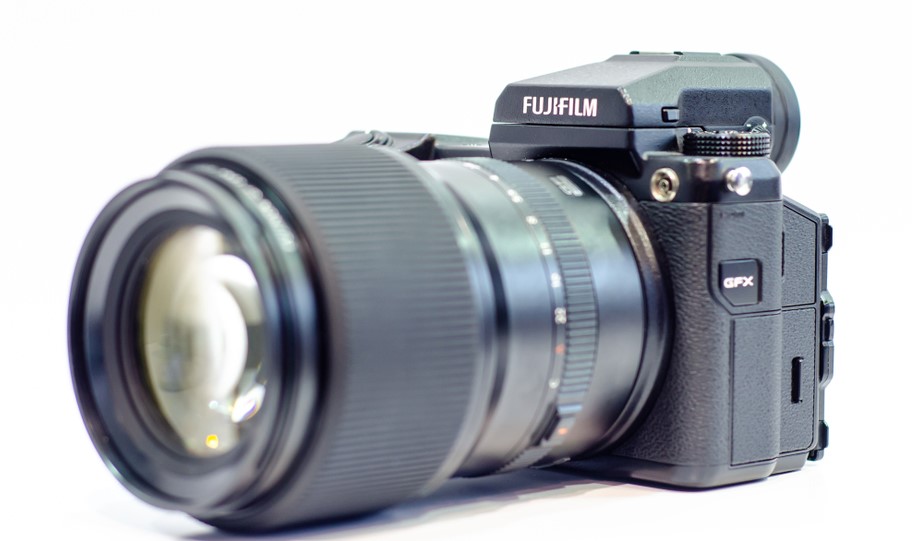
Top Camera Brands for Wildlife Photography
Having explored different camera types and sensor sizes, let’s delve into some leading brands renowned for their exceptional wildlife photography capabilities:
High-End vs. Budget Cameras: Understanding the Differences in Features and Factors to Consider.
Nikon:
A longstanding name in the industry, Nikon offers a robust selection of cameras suitable for wildlife enthusiasts. From award-winning DSLRs like the D500 to the innovative mirrorless Z series, Nikon caters to a range of experience levels and budgets.
For professional wildlife photographers, the Nikon Z 9 is a powerhouse with a high-resolution sensor, blazing-fast autofocus, and incredible low-light performance. It pairs seamlessly with Nikon’s NIKKOR lenses, including the renowned super-telephoto options that deliver stunning image quality and reach.
For the wildlife enthusiast and beginner, the Nikon’s D7500 DSLR remains a popular choice. It boasts a powerful DX-format sensor and a fast autofocus system, making it well-suited for capturing wildlife on the move.
Nikon also offers a range of telephoto lenses at various price points, ensuring there’s an option to fit most needs. Whether you’re photographing birds in flight, stalking elusive predators like bears or mountain lions in their natural habitat, or capturing close-ups of insects, Nikon has the camera and lens system to empower you to capture the beauty and wonder of the natural world.
Pro-Level Nikon Cameras:
Flagship Pick: Nikon Z 9: (Mirrorless) This top-of-the-line mirrorless camera boasts a powerful 45.7MP full-frame sensor, blazing-fast autofocus, and an impressive 20 frames per second continuous shooting rate when shooting RAW and a practically unlimited buffer of over 1000 photos.
Built for the toughest conditions, the Z 9 is weather-sealed and features a durable magnesium alloy body. Additionally, it provides access to Z glass and superior video capabilities for wildlife shooters.
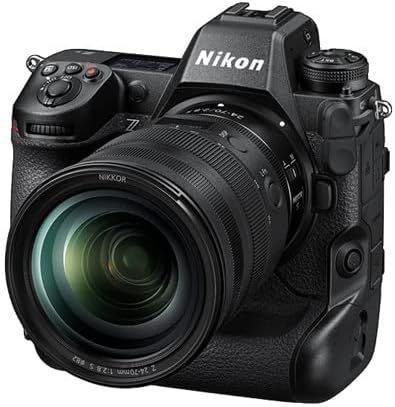
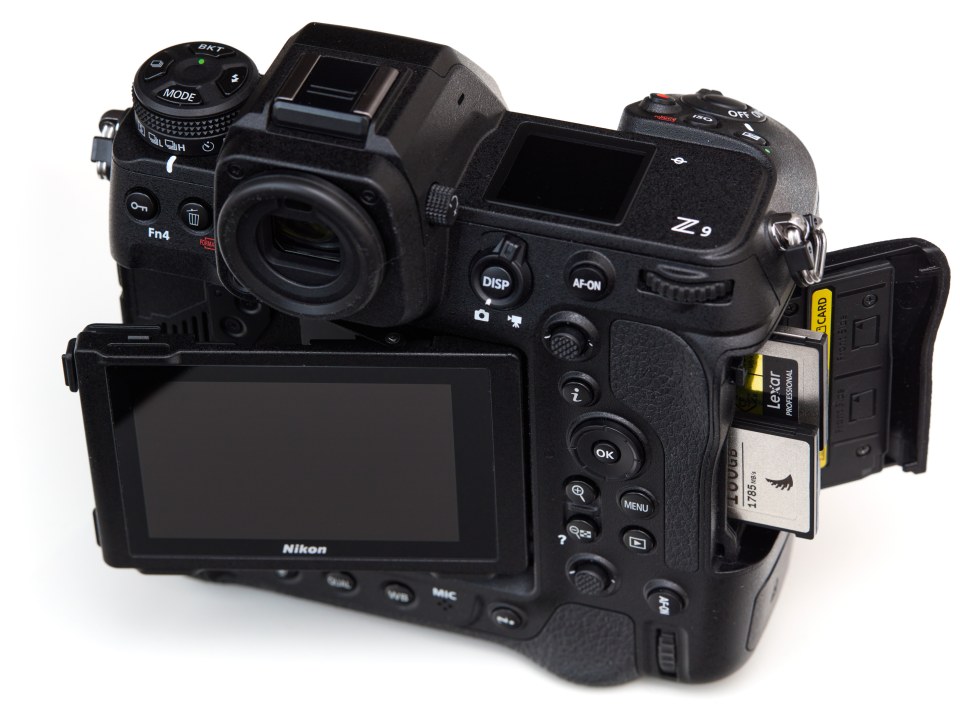
Strong Contender: Nikon Z8: (Mirrorless) A powerful stacked-sensor mirrorless camera and versatile option, the Z8 packs a 45.7MP full-frame sensor, capable of capturing sharp and detailed wildlife images.
It features a subject-tracking autofocus system and a rapid continuous shooting rate of up to 20 frames per second, making it suitable for fast-action wildlife encounters.
With blazing-fast autofocus, a natural blackout-free viewfinder, and a continuous shooting rate of 20 FPS, it’s a powerhouse for wildlife photography.
Pair it with the latest Z glass, and you’ve got an unbeatable combination. Plus, it’s more versatile and lighter than its sibling, the Z9, and costs considerably less.
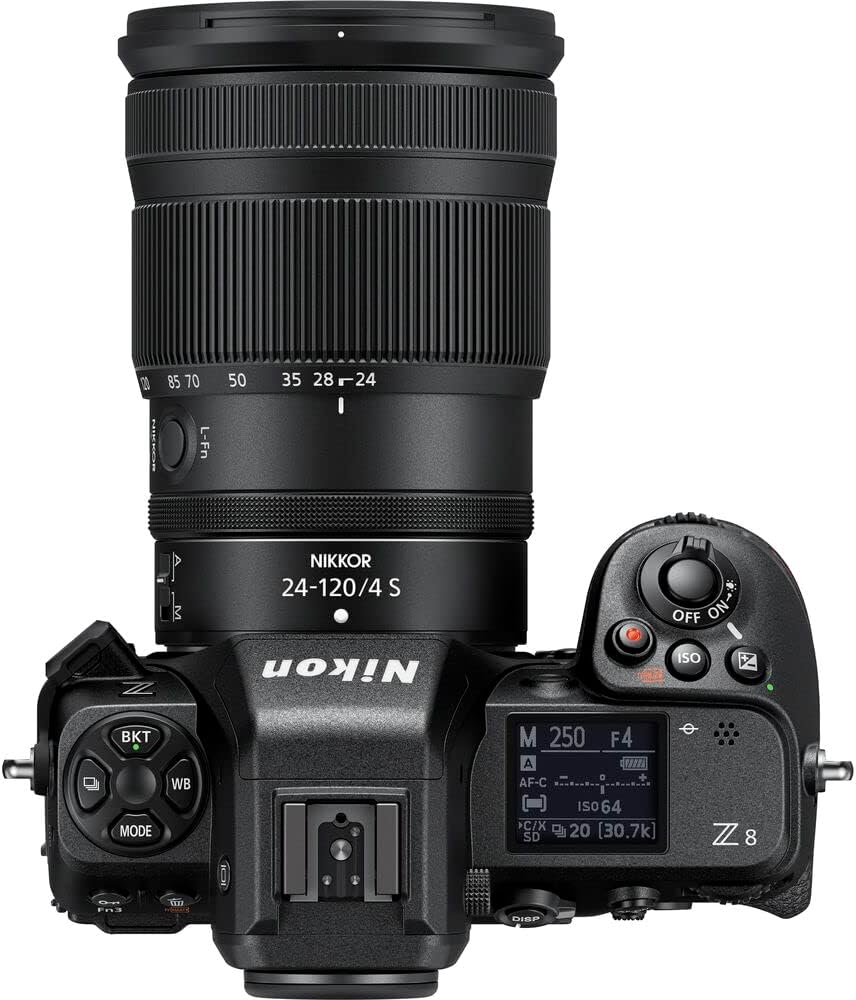
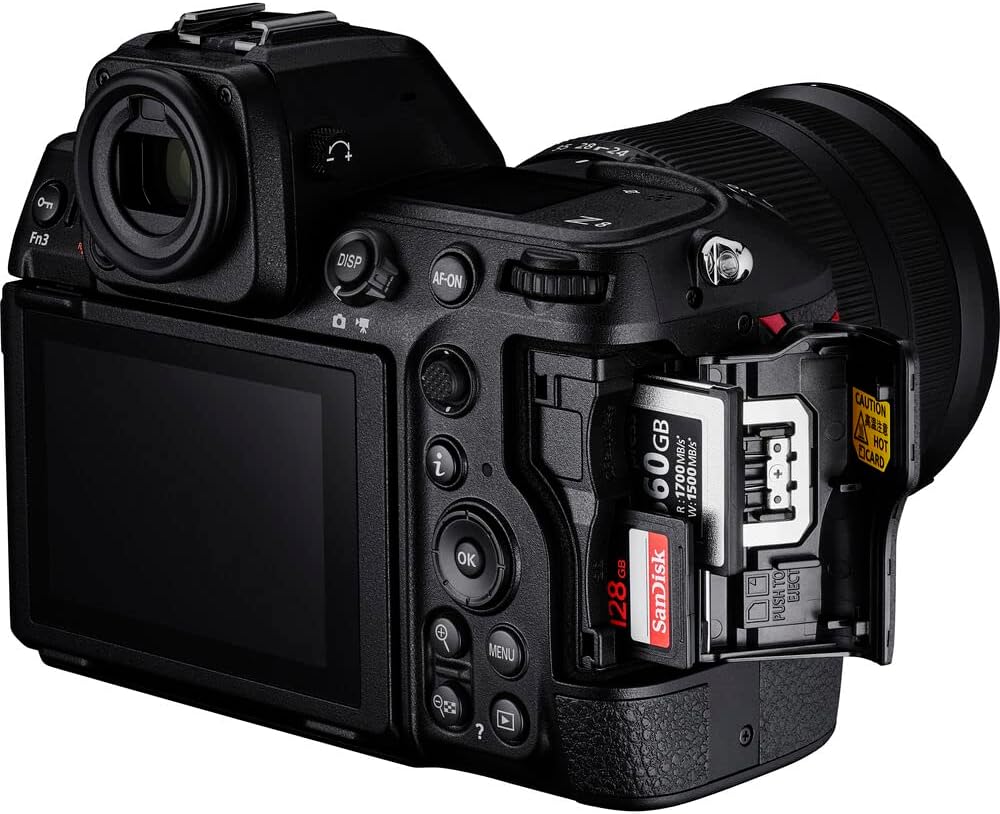
Enthusiast Nikon DSLR Cameras:
Nikon D850: A Workhorse for Wildlife Enthusiasts
The Nikon D850 has become a compelling camera for wildlife photography, offering a blend of high-resolution imaging, fast performance, and robust build quality – all at a more attractive price point thanks to the influx of mirrorless cameras in the market, particularly the Nikon Z series’ Z8 and Z9. Let’s explore the pros and cons to help you decide if this full-frame workhorse is the right choice for you, especially if you’re considering an upgrade from a crop sensor camera and aiming for a budget-friendly option compared to the Z8/Z9.
Pros:
Superb Image Quality: The Nikon D850 boasts a 45.7-megapixel full-frame sensor, capturing exceptional detail and clarity in your wildlife shots. This allows for cropping flexibility and creating stunning large prints.
Excellent Low-Light Performance: Despite the high megapixel count, the D850 delivers good image quality even in low-light situations. This is crucial for capturing wildlife active at dawn, dusk, or in heavily forested areas.
Fast Autofocus: The D850’s autofocus system is fast and accurate, essential for tracking unpredictable wildlife movement. It excels at locking onto subjects and maintaining focus during bursts.
Durable Build: The D850 is built to withstand the rigors of outdoor photography. Its weather-sealed magnesium alloy body is dust and moisture resistant, allowing you to shoot in challenging environments.
Fast Frame Rate: The D850 can capture images at a rate of 7 frames per second (fps), which can be further boosted to 9 fps with the optional battery grip. This is sufficient for capturing bursts of action, like a bird taking flight.
Long Battery Life: The D850 has a good battery life, allowing you to shoot for extended periods without worrying about running out of power in the field.
More Affordable Option Now: With the rise of mirrorless technology, the price of the D850 has dropped, making it a more accessible full-frame choice for wildlife enthusiasts on a budget, especially compared to the higher price tags of the Z8 and Z9.
Cons:
Bulkier Than Mirrorless Options: Compared to newer mirrorless cameras, the D850 is larger and heavier. This can be a disadvantage for photographers who prioritize portability on long hikes or treks.
Autofocus Not Top-Tier: While good, the autofocus system might not be on par with the absolute best in the market, especially for tracking very fast-moving animals or birds in erratic flight.
Cropping for Reach: The D850 lacks a built-in APS-C crop mode, which some wildlife photographers utilize with specific lenses to gain additional reach. This might necessitate purchasing telephoto lenses with longer focal lengths.
Considering a Crop Sensor Upgrade?
Upgrading from a crop sensor camera to the D850 offers several significant advantages:
Superior Image Quality: The full-frame sensor captures noticeably more light and detail, resulting in sharper images, especially in low-light conditions.
Shallower depth of field: The larger sensor allows for a shallower depth of field, creating a pleasing background blur that can isolate your wildlife subject and enhance the image’s artistic impact.
Improved low-light performance: Full-frame sensors are generally better at handling low-light situations, allowing you to capture cleaner images at dusk, dawn, or in dense forests.
Who is it for?
Budget-conscious enthusiasts, especially those without a Z8/Z9 budget: With the price drop, the D850 is a more accessible high-resolution full-frame option for wildlife photographers.
Photographers upgrading from crop sensor: The D850 offers significant image quality improvements and low-light performance compared to crop cameras.
Those prioritizing image quality: If exceptional detail and large prints are your primary concern, the D850 excels.
Photographers shooting in good lighting: If shooting primarily in well-lit environments, the autofocus system is sufficient for most wildlife situations.
Who might look elsewhere?
Strict budget: While the price has dropped, the D850 might still be outside some budgets.
Prioritizing portability: Mirrorless cameras offer a more compact size for photographers who value easy carrying.
Needing absolute top-tier autofocus: If autofocus for very fast-moving subjects is paramount, explore cameras with the latest and most advanced systems, like the Nikon Z9 or Z8.
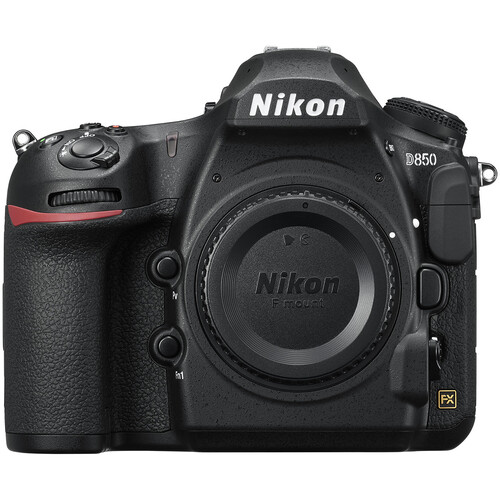
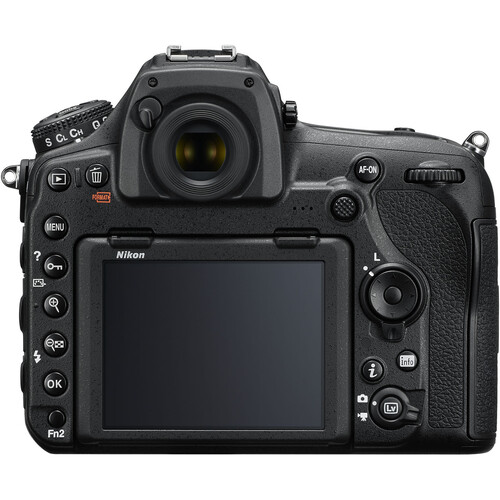
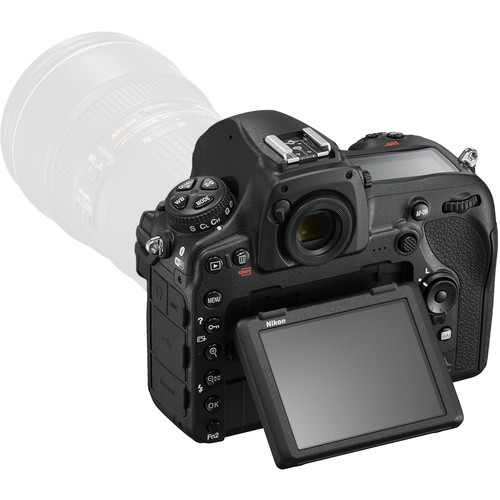
Nikon D7500: (Crop Sensor)
This APS-C DSLR crop sensor camera strikes an excellent balance between performance and affordability. It features a 20.9MP sensor, a 10fps continuous shooting rate, and a capable autofocus system. The D7500 is also weather-sealed, making it a good choice for outdoor adventures. This is the camera I began with when I started shooting wildlife. I still use it today as a backup. I love this camera.
The Nikon D7500 is a capable APS-C DSLR camera that can be suitable for wildlife and birding photography, but it does have both advantages and limitations to consider:
Pros:
Affordability: Compared to full-frame cameras, the D7500 and its compatible lenses are generally more affordable, making it a good entry-point camera for wildlife photography.
Compactness and Portability: Being a crop sensor camera, the D7500 is lighter and more compact than full-frame cameras. This can be advantageous for photographers who value mobility, especially during long hikes or carrying equipment long distances.
Crop Factor: The APS-C sensor offers a 1.5x crop factor. This effectively increases the focal length of your lens, providing a closer framing of distant subjects. This can be beneficial for wildlife photography where getting close to animals can be challenging.
Decent Image Quality: The 20.9MP sensor and EXPEED 5 image processor can capture good quality images, especially in well-lit conditions.
Cons:
Low-Light Performance: Compared to full-frame cameras, the D7500’s APS-C sensor struggles in low-light situations. Wildlife photography often involves capturing animals at dawn, dusk, or in shaded areas. In these scenarios, image quality can suffer from noise (grain) at higher ISOs.
Slower Autofocus: While the D7500 has a decent autofocus system, it might not be as fast or accurate as the latest high-end full-frame mirrorless cameras. This can be a disadvantage when tracking fast-moving wildlife or capturing spontaneous moments.
Limited Lens Selection: While Nikon offers a good range of lenses, the selection specifically designed for wildlife photography might be smaller compared to full-frame camera systems.
One card slot: I’ve been using the D7500 for years and absolutely love it. While some photographers prioritize data redundancy and might find the single memory card slot a limitation, I haven’t personally experienced any issues with it in my workflow.
Overall:
The Nikon D7500 can be a good starter camera for wildlife and birding photography, especially for hobbyists or photographers on a budget. However, if you are serious about wildlife photography and want the best possible image quality, especially in low-light conditions, a full-frame camera with a faster autofocus system and wider lens selection might be a better long-term investment.
Here are some additional factors to consider:
Your experience level: If you are a beginner, the D7500’s affordability and compact size can be appealing.
Shooting conditions: If you frequently shoot in low-light environments, a full-frame camera might be a better choice.
Budget: Full-frame cameras and lenses are generally more expensive than APS-C options.
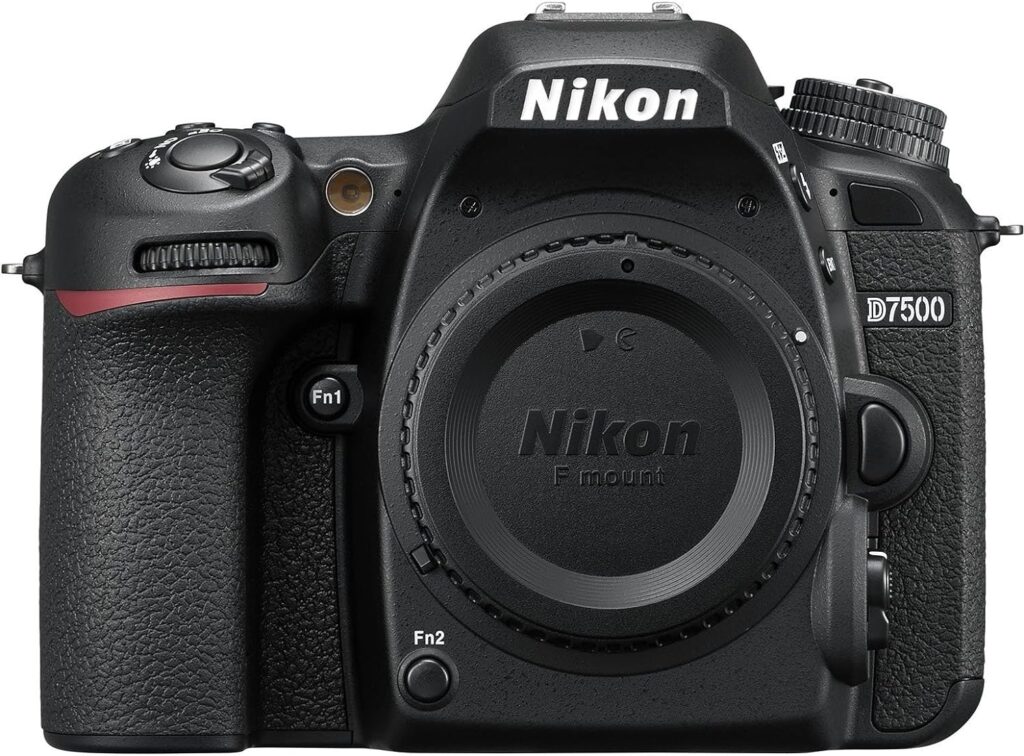
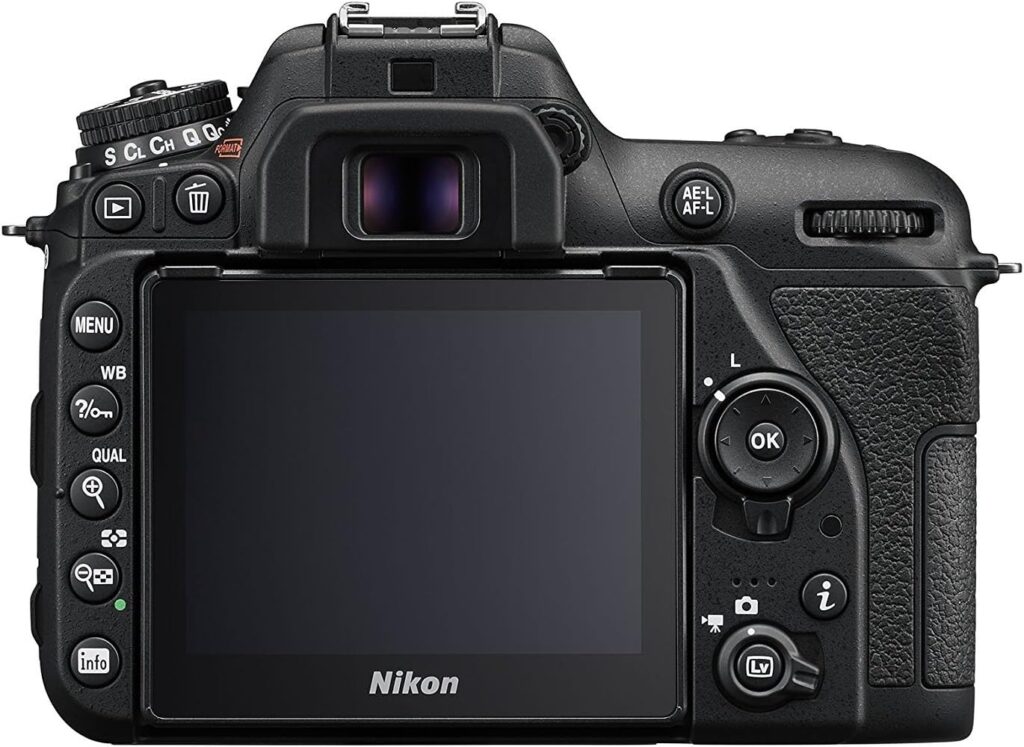
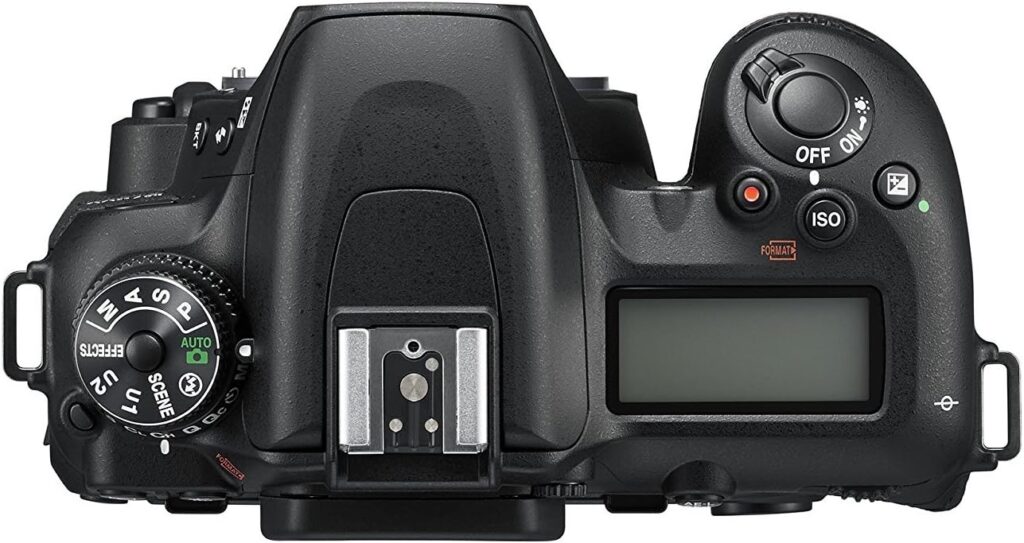
Alternatives:
Nikon Z50/Zfc: (Mirrorless) These mirrorless cameras offer similar APS-C sensors to the D7500 but with potentially faster autofocus and improved low-light performance.
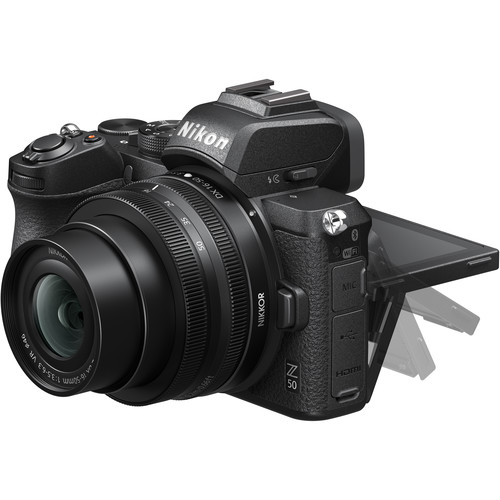
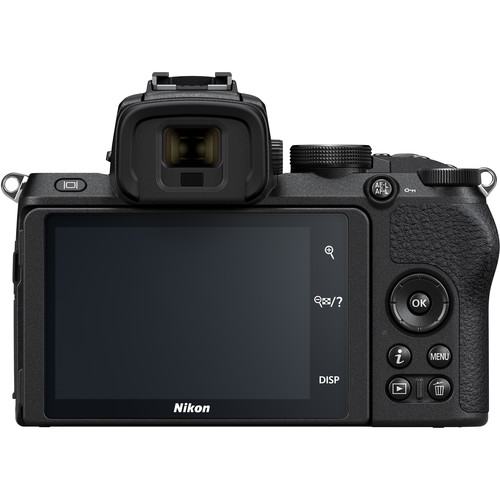
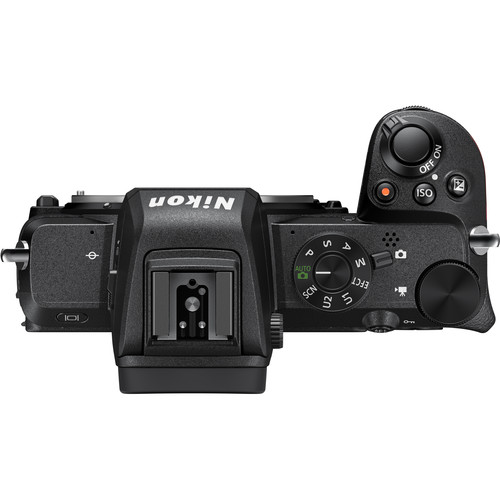
Nikon Z50 vs. Nikon D7500: Mirrorless vs. DSLR Showdown
Here’s a breakdown comparing the Nikon Z50 (mirrorless) and Nikon D7500 (DSLR) to help you decide which camera is right for you:
Sensor:
Nikon Z50: APS-C (23.5 x 15.7mm) CMOS sensor with 20.9 megapixels
Nikon D7500: APS-C (23.6 x 15.6mm) CMOS sensor with 24.2 megapixels
Image Quality:
Both cameras offer good image quality, but the D7500 might have a slight edge due to its higher megapixel count. However, the difference may be negligible in most real-world situations.
Autofocus:
Z50: 209-point hybrid autofocus system with eye-detection (better for portraits)
D7500: 153-point phase-detect autofocus system (faster for action photography)
Viewfinder:
Z50: Electronic viewfinder (EVF) – offers a live preview of the image with adjustments.
D7500: Optical viewfinder (OVF) – traditional viewfinder, doesn’t show live adjustments.
Video:
Z50: 4K UHD video recording at up to 30 fps with a crop
D7500: Full HD (1080p) video recording at up to 60 fps
Other Features:
Z50: Lighter and more compact, weather-sealed body, in-app tutorials (great for beginners)
D7500: Longer battery life, dual SD card slots for redundancy, built-in flash
Pros of Nikon Z50
- More affordable (usually)
- Lighter and more portable
- Superior autofocus for portraits (eye-detection)
- Electronic viewfinder shows live image adjustments
- Weather-sealed body for tougher conditions
- In-app tutorials for beginners
Cons of Nikon Z50:
- Lower megapixel count compared to D7500 (minor difference in image quality)
- Slower autofocus for action photography
- Video limited to 4K at 30 fps (cropped)
- Only one memory card slot
Pros of Nikon D7500:
- Higher megapixel count (potentially sharper images)
- Faster autofocus for action photography
- Longer battery life
- Dual SD card slots for redundancy
- Built-in flash
Cons of Nikon D7500:
- More expensive (usually)
- Bulkier and heavier
- Optical viewfinder doesn’t show live adjustments
- Limited to Full HD video (1080p)
Who should choose the Nikon Z50:
- Beginners or hobbyist photographers on a budget
- Users who prioritize a compact and lightweight camera
- Portrait photographers who want eye-detection autofocus
- Those who value in-app tutorials and a weather-sealed body
Who should choose the Nikon D7500:
- The enthusiast and beginner wildlife photographer
- Photographers who shoot a lot of action and need fast autofocus
- Users who prefer a traditional optical viewfinder
- Those who need longer battery life
- Photographers who value dual card slots and a built-in flash
- Ultimately, the best choice depends on your individual needs and priorities.
If you’re a beginner or value portability and affordability, the Z50 is also a great option. If you prioritize action photography, traditional viewfinders, or longer battery life, the D7500 might be a better fit/
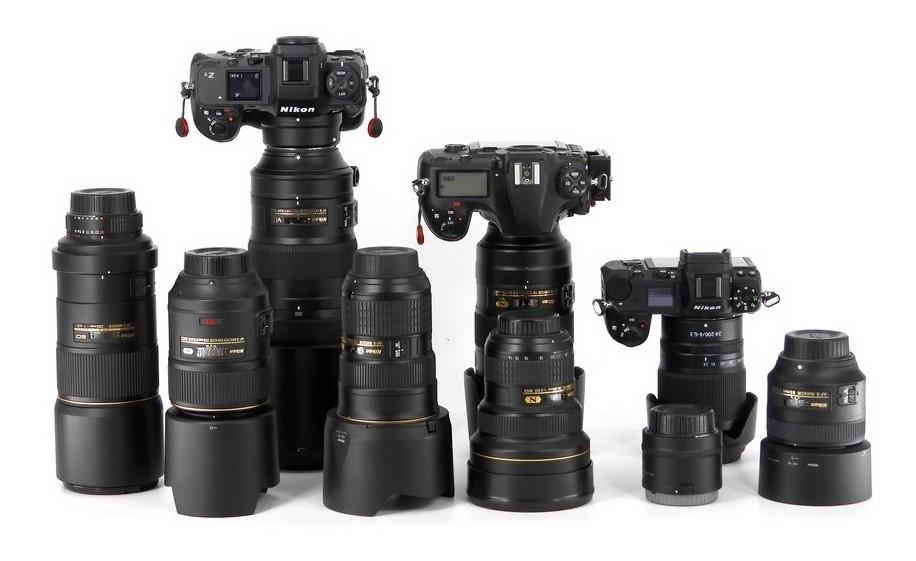
Canon:
Canon, alongside Nikon, is a titan in the camera industry. For over 80 years, Canon has been synonymous with high-quality cameras and lenses. They’ve earned a reputation for reliable, innovative products that cater to both casual photographers and professional users.
Canon boasts a vast range of EOS cameras, from beginner-friendly mirrorless options to high-end professional DSLRs. Their lens selection is equally impressive, with renowned lines like the L-series offering exceptional optical performance and durability for all types of photography, including wildlife.
Canon’s telephoto lenses, paired with their fast autofocus systems and high-resolution sensors, make them a popular choice among wildlife photographers.
The Canon EOS R3, for instance, is a mirrorless powerhouse with features specifically designed for wildlife and sports photography, like subject tracking and a high frame rate.
Pro level vs. Enthusiast and Beginner-Friendly Cameras: A Breakdown of Key Features and Considerations
Pro-Level Canon Cameras:
Canon EOS R5: (Mirrorless) This top-tier mirrorless camera boasts exceptional autofocus, outstanding image quality, and weather-sealed construction. It’s a versatile choice for wildlife photography, offering 8K video capabilities that allow you to extract crystal-clear stills.
The Canon EOS R5 is a full-frame CMOS sensor with 45MP resolution, excellent image quality, high-resolution electronic viewfinder (EVF), animal eye detection autofocus, up to 20fps continuous shooting with mechanical shutter, weather-sealed magnesium alloy body.
Considerations: Lower frame rate compared to EOS R3, potential overheating issues during extended 8K video recording. A versatile camera for professional wildlife photographers who prioritize high-resolution images and good low-light performance.
Strong Contender: Canon EOS R3:
Canon EOS R3 (Mirrorless) Key Features: Full-frame mirrorless camera, 24MP stacked CMOS sensor, high-resolution electronic viewfinder (EVF), subject tracking autofocus, up to 30fps continuous shooting, weather-sealed magnesium alloy body.
Considerations: High-end price tag requires investment in compatible lenses. Ideal for professional wildlife photographers who need top-of-the-line performance and speed, especially for action shots.
Enthusiast and Beginner-Friendly Cameras:
- Canon EOS 90D: (DSLR)
- Key Features: APS-C CMOS sensor with 32.5MP resolution, fast and accurate 45-point autofocus system, 10fps continuous shooting, vari-angle touchscreen LCD, durable weather-sealed body.
- Considerations: APS-C sensor offers a crop factor, limiting telephoto reach compared to full-frame. Great option for serious wildlife photographers who want excellent image quality without the pro-level price tag.
- Canon EOS M50 Mark II: (Mirrorless)
- Key Features: APS-C CMOS sensor with 24.1MP resolution, fast and Dual Pixel CMOS autofocus system, 10fps continuous shooting, fully articulating touchscreen LCD, compact and lightweight design.
- Considerations: Smaller sensor limits low-light performance and high-ISO capabilities. A good starting point for those new to wildlife photography, offering portability and ease of use.
Additional Considerations:
- Lenses: Consider investing in a telephoto zoom lens with good image quality and reach. Canon’s EF or RF lenses (depending on camera type) offer various options for wildlife photography.
- Autofocus: Fast and accurate autofocus is crucial for capturing wildlife in action. Look for cameras with advanced autofocus systems designed for tracking moving subjects.
- Image Stabilization: Image stabilization helps reduce camera shake, especially important for long focal lengths and low-light conditions. Look for cameras and lenses with built-in stabilization.
- Weather Sealing: If shooting outdoors in challenging conditions, a weather-sealed camera body is crucial to protect your equipment.
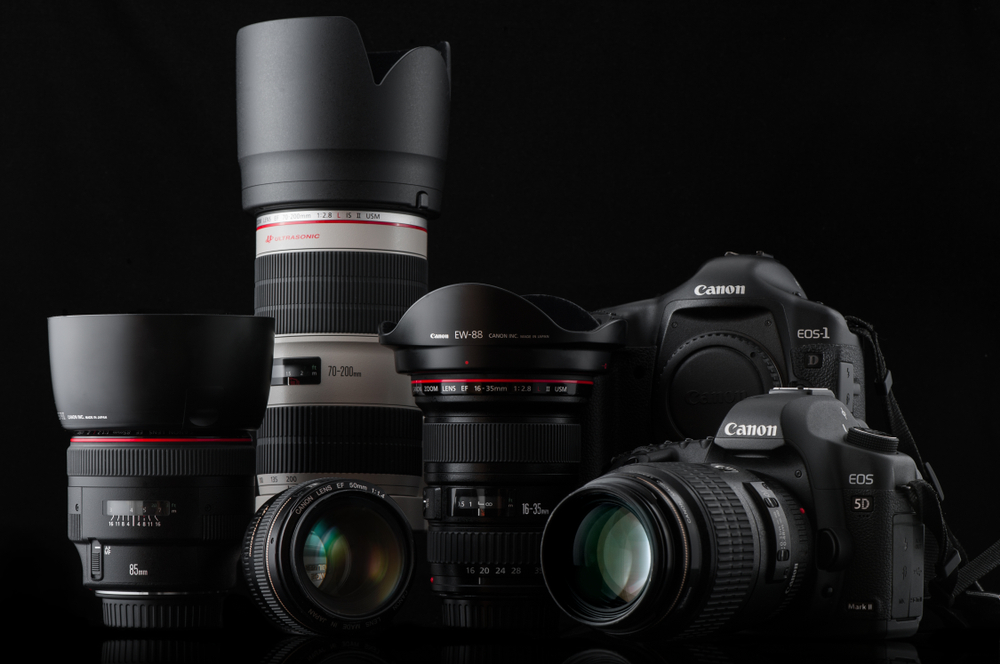
Sony:
Joining Canon and Nikon, and renowned for its innovative technology, Sony has emerged as a major player in the camera market and offers a compelling selection of mirrorless cameras for wildlife enthusiasts and beginners. Here’s a breakdown of some popular options:
Pro-Level Cameras:
- Sony Alpha 1: This is Sony’s current flagship mirrorless camera and a powerhouse for professional wildlife photographers.
- It boasts a full-frame stacked Exmor RS CMOS sensor with a whopping 50.1 megapixels for exceptional image detail and resolution.
- Blazing-fast continuous shooting speed of up to 30fps with blackout-free viewing to capture fleeting wildlife moments.
- Cutting-edge autofocus system with subject tracking and animal eye autofocus for precise focus on fast-moving creatures.
- High-resolution electronic viewfinder (EVF) and a fully articulating touchscreen LCD for clear viewing and composition in various shooting conditions.
- Weather-sealed magnesium alloy body for durability in challenging outdoor environments.
Sony Alpha a9 II: While the Alpha 1 might be the newer kid on the block, the Alpha a9 II remains a highly capable professional camera for wildlife photography. It features a full-frame stacked Exmor RS CMOS sensor with 24.2 megapixels, offering a good balance between resolution and low-light performance. - Phenomenal continuous shooting speed of up to 20fps with blackout-free viewing, perfect for capturing bursts of action.
- Excellent autofocus system with 693 phase-detection points and animal eye autofocus for reliable subject tracking.
- High-resolution electronic viewfinder (EVF) and a tilting touchscreen LCD for comfortable composing.
- Weather-sealed magnesium alloy body built to withstand demanding outdoor use.
Choosing Between Alpha 1 and Alpha a9 II:
The choice depends on your specific needs: For the absolute best resolution and speed: Sony Alpha 1 reigns supreme. For a balance of excellent performance and a more affordable price tag: Sony Alpha a9 II is a compelling option.
Additional Considerations:
Lenses: Sony offers a robust selection of high-quality E-Mount lenses. Look for professional-grade telephoto zooms with exceptional image quality and fast apertures for low-light photography.
Battery Life: While improved, mirrorless cameras generally have shorter battery life compared to DSLRs. Carry extra batteries for extended shoots.
Enthusiast and Beginner-Friendly Cameras
Enthusiast Level:
Sony Alpha a6400: (Mirrorless – Crop Sensor)
Key Features: APS-C CMOS sensor with 24.2MP resolution, excellent image quality, fast and accurate 425-point autofocus system with real-time tracking and animal eye autofocus, 11fps continuous shooting, high-resolution electronic viewfinder (EVF), tilting touchscreen LCD.
Considerations: APS-C sensor offers a crop factor, limiting telephoto reach compared to full-frame. A well-established and powerful mirrorless camera for wildlife enthusiasts, known for its exceptional autofocus capabilities, good image quality, and portability.
Sony Alpha a7 IV: (Full-frame – Mirrorless)
Key Features: Full-frame CMOS sensor with 33MP resolution, superior low-light performance, fast and improved hybrid autofocus system with animal eye autofocus, 10fps continuous shooting with mechanical shutter (up to 20fps with electronic shutter), high-resolution electronic viewfinder (EVF), fully articulating touchscreen LCD, weather-sealed magnesium alloy body.
Considerations: Higher price tag compared to APS-C options, larger and heavier body. A top-tier mirrorless camera for serious wildlife photographers who prioritize full-frame image quality, low-light performance, and excellent autofocus.
Beginner-Friendly:
Sony a6100: (Mirrorless – Crop Sensor)
Key Features: APS-C CMOS sensor with 24.2MP resolution, good image quality, fast and accurate 425-point autofocus system with real-time tracking, 8fps continuous shooting, high-resolution electronic viewfinder (EVF), tilting touchscreen LCD, compact and lightweight body.
Considerations: Limited to Full HD video recording, shorter battery life compared to some competitors. A fantastic entry-level mirrorless camera for those stepping into wildlife photography, offering a good balance of portability, autofocus capabilities, and image quality at a competitive price.
Additional Considerations:
- Lenses: Sony offers a range of E-Mount lenses suitable for wildlife photography. Consider telephoto zoom lenses with good image quality and reach.
- Autofocus: Fast and accurate autofocus is crucial. Look for cameras with autofocus systems designed for tracking moving subjects (Sony calls it “real-time tracking”).
- Image Stabilization: Image stabilization helps reduce camera shake and is especially important for long focal lengths and low-light conditions. Look for cameras and lenses with built-in image stabilization (OSS for Sony).
- Weather Sealing: For outdoor shooting, a weather-sealed camera body is recommended to protect your equipment.
Remember: This list highlights some popular Sony options, and there are other Sony cameras and lenses suitable for wildlife photography. Research and compare features to find the best fit for your experience level and budget.
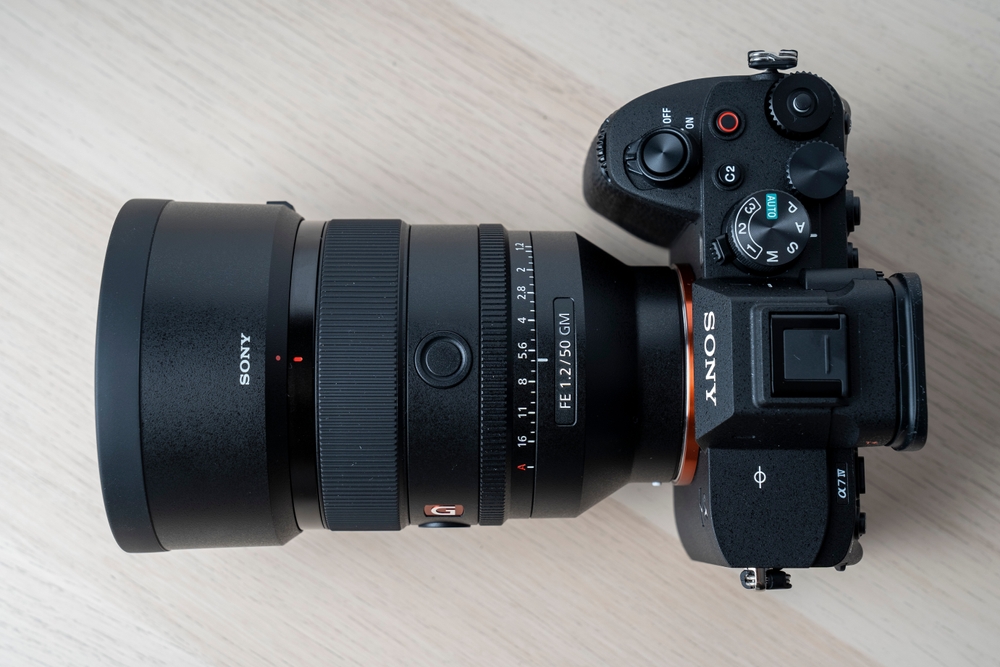
OM System:
Olympus transitioned their camera business to OM Digital Solutions (OM SYSTEM) in 2020. Fear not, though – OM SYSTEM carries the torch for Olympus cameras, continuing to develop and sell the Micro Four Thirds (MFT) system you know and love under the OM-D brand. So, while the name has changed, the commitment to powerful, portable cameras for wildlife photography remains! Let’s delve into the exciting world of OM SYSTEM cameras and see what they offer for your next wildlife adventure.
Pro-Level Cameras:
Top Olympus Camera for Wildlife Photography:
The OM SYSTEM OM-1 (Mirrorless MFT) is an excellent choice for nature photography. The OM System OM-1 is a powerful micro four thirds mirrorless camera pushing boundaries. It boasts features rivaling APS-C and even full-frame options, thanks in part to advanced computational photography. While its sensor is smaller than full frame, it delivers exceptional performance. Let’s explore its capabilities in a little more detail.
- It’s a Micro Four Thirds (MFT) camera, which means it’s more portable than full-frame models.
- The OM-1 boasts fantastic image stabilization and allows you to use physically smaller lenses for longer equivalent focal lengths.
- Its five-axis in-body image stabilization (IBIS) ensures steady shots even at longer focal lengths.
- The camera offers a quick burst rate and a pre-burst ‘Pro Capture’ mode to capture critical moments.
- It’s rugged, compact, and weather-sealed, with excellent ergonomics and a solid battery life.
Enthusiast and Beginner-Friendly Cameras:
If you’re on a tighter budget, consider the: Olympus OM-D E-M10 Mark IV:
- It’s a fantastic entry-level choice for wildlife photography.
- While being budget-friendly, it still delivers good performance.
- The E-M10 Mark IV offers features like 4K video recording and a compact design.
- It’s a great starting point for beginners venturing into wildlife photography.
- Remember, both of these cameras can help you capture stunning wildlife moments, whether you’re a seasoned photographer or just starting out!
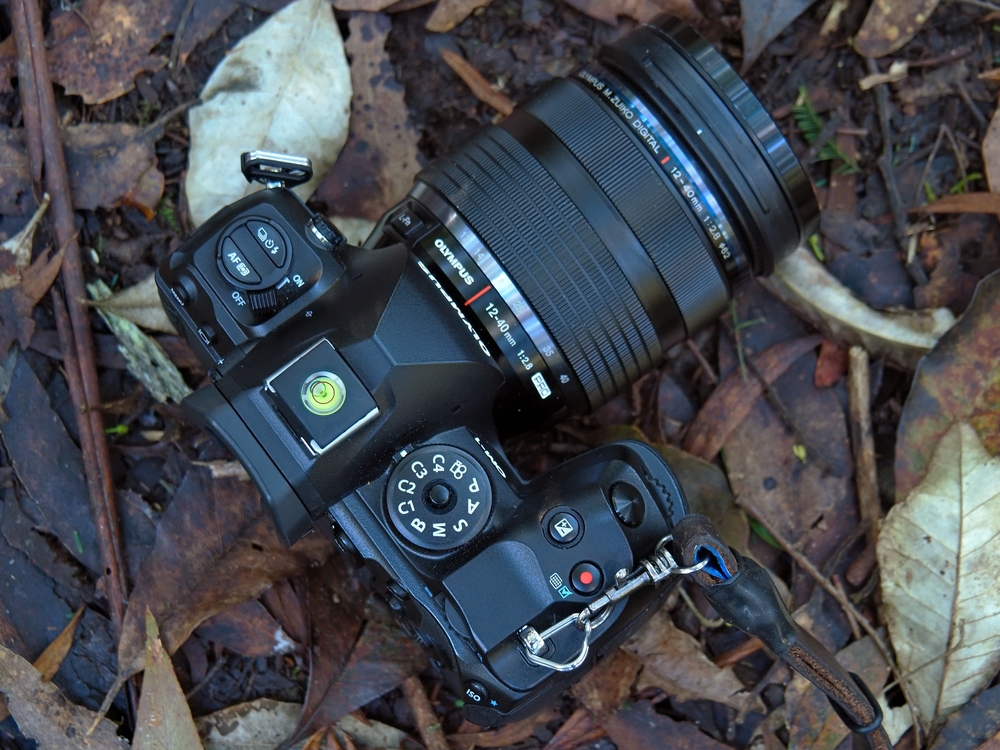
Choosing the Right Camera: Essential Features
Now that you have a grasp of major camera brands, let’s dive deeper into the key features that set wildlife photography cameras apart:
Sensor Size and Resolution:
Sensor Size: As mentioned earlier, full-frame sensors generally outperform APS-C sensors in low-light conditions due to their larger surface area capturing more light. This translates to better image quality with less noise (grain) at higher ISO settings, crucial for capturing wildlife in low-light environments like early mornings or dense forests.
Resolution (Megapixels): While megapixel count determines image resolution and the ability to print large photographs, it’s not the sole factor. A high megapixel count allows for significant cropping without compromising image quality. However, sensor size, lens quality, and image processing capabilities also significantly influence the final image.
For wildlife photography, 20-30 megapixels is generally considered a good range, offering a good balance between image quality, file size, and low-light performance.
Autofocus: Capturing the Decisive Moment:
- Reliable and Responsive Autofocus: When photographing fast-moving wildlife, a split-second delay in focus can mean missing the perfect shot. Look for cameras with fast and accurate autofocus systems, particularly those offering continuous autofocus (AF-C) mode.
- This mode keeps the subject in focus even if it’s moving erratically.
- Subject Tracking and Eye-Detection AF: Advanced cameras boast features like subject tracking autofocus that locks onto your chosen subject and maintains focus as it moves throughout the frame. Eye-detection autofocus takes subject tracking a step further by specifically focusing on the animal’s eye, ensuring critical sharpness on the most expressive part of the creature.
- Burst Mode: Freezing Fleeting Actions:
- High Burst Rates: Wildlife is unpredictable, and capturing the perfect moment often requires taking multiple frames in rapid succession. Cameras with high burst rates (frames per second) allow you to do just that.
- Aim for cameras that can capture at least 10 frames per second (fps) for good wildlife photography performance. Faster burst rates (up to 20 fps or higher) offer even greater chances of capturing the peak of the action, like a bird taking flight or a predator lunging for its prey.
- Weather Sealing: Embracing the Elements:
- Protecting Your Gear: Wildlife photography often takes place in unpredictable environments, from dusty plains to rainforests. A weather-sealed camera with dust and moisture resistance safeguards your equipment from the elements. Look for cameras with sealed seams, gaskets around buttons and ports, and weather-resistant lenses to ensure your camera continues to function in challenging conditions.
- Image Stabilization: Combating Camera Shake:
- Sharpness is Key: Camera shake can blur images, especially when using long telephoto lenses or shooting in low-light conditions. To counteract this, look for cameras with either in-body image stabilization (IBIS) or lens stabilization. IBIS technology counteracts camera shake by shifting the sensor itself, while lens stabilization uses elements within the lens to achieve the same effect. Having either form of image stabilization is crucial for capturing sharp wildlife images, especially at slower shutter speeds.
- By understanding these essential features and their significance in wildlife photography, you’ll be better equipped to choose the right camera that aligns with your shooting style and budget.
Additional Considerations:
While the camera plays a vital role, it’s just one piece of the wildlife photography puzzle. Here are some additional factors to consider and which we will cover in future blogs:
• Lenses: Selecting the right lens is essential for wildlife photography. Telephoto lenses with long focal lengths allow you to capture close-up shots of distant subjects. Consider lenses with a focal length of at least 400mm for adequate reach.
• Tripods: For sharp images, especially at slow shutter speeds, a sturdy tripod is essential. Look for a tripod that is lightweight yet stable enough to support your camera and lens combination.
• Memory Cards: Wildlife photography can result in capturing a large number of images. Invest in high-speed memory cards with sufficient capacity to store your photos without interruption. Consider UHS-II or CFexpress cards for faster write speeds.
Conclusion:
Choosing the right camera for wildlife photography requires careful consideration of your individual needs, budget, and shooting style. By understanding the different camera types, sensor sizes, and essential features, you can make an informed decision that empowers you to capture stunning wildlife imagery.
Remember, the journey into wildlife photography is a continuous learning process. Experiment with different techniques, practice in the field, and most importantly, enjoy the thrill of documenting the wonders of the natural world.
As you embark on this exciting adventure, keep in mind that the camera is just one part of the equation. In the next blog post, we’ll delve into the fascinating world of lenses, exploring the crucial role they play in wildlife photography. We’ll discuss different lens types, focal lengths, and essential features to consider when selecting the perfect glass to complement your camera and capture breathtaking wildlife moments.
FAQs:
- What is the best camera brand for wildlife photography?
There isn’t a single “best” brand as each manufacturer offers excellent cameras with unique strengths and features. Top contenders include Nikon, Canon, Sony, and Olympus, each catering to different needs and budgets. - Should I prioritize a full-frame or APS-C camera?
Full-frame cameras generally offer superior low-light performance and shallower depth of field. However, APS-C cameras can be a good choice for beginners or those on a tighter budget, especially considering the crop factor that effectively increases focal length. - Is megapixel count the most important factor?
While megapixels contribute to image resolution, sensor size, lens quality, and image processing also significantly influence image quality. Don’t solely rely on megapixel count when making your camera selection. - How important is autofocus in wildlife photography?
A reliable and responsive autofocus system is crucial for capturing fast-moving wildlife. Look for cameras with features like subject tracking and eye-detection autofocus for sharp and accurate focus. - Do I need a weather-sealed camera?
If you plan on shooting outdoors in unpredictable weather conditions, a weather-sealed camera with dust and moisture resistance is highly recommended to protect your gear from the elements.
Remember, this ultimate-guide-to-wildlife-cameras serves as an overview. As you delve deeper into wildlife photography, you’ll gain a better understanding of your specific needs and preferences, allowing you to refine your camera selection and capture breathtaking wildlife imagery.
Keep an eye out for the next blog post where we’ll explore the captivating world of lenses in wildlife photography!
Here are some additional points to consider:
Camera bodies are like smartphones: technology advancements often lead to upgrades with newer features and processing power. High-quality lenses, however, are more akin to timeless investments.
Unlike camera bodies that become outdated sooner, good lenses can last for many years. They can even be adapted to work with different camera bodies as you upgrade or even switch brands.
Therefore, the saying “buy the body, but marry the lens” emphasizes the importance of investing in high-quality lenses. These lenses deliver exceptional image quality and serve you well throughout your photographic journey even as camera bodies become outdated.
Lenses directly influence the final image. A good lens significantly enhances sharpness, bokeh, and overall aesthetic qualities compared to a lower-quality one.
Creative control: Different focal lengths and apertures offered by lenses grant you creative control over framing, subject isolation, and depth-of-field manipulation.
In essence, the saying highlights the long-term value of good lenses. While camera bodies are more prone to upgrades as technology evolves, a good lens remains a valuable asset for any photographer.
More on lens in our next blog!




